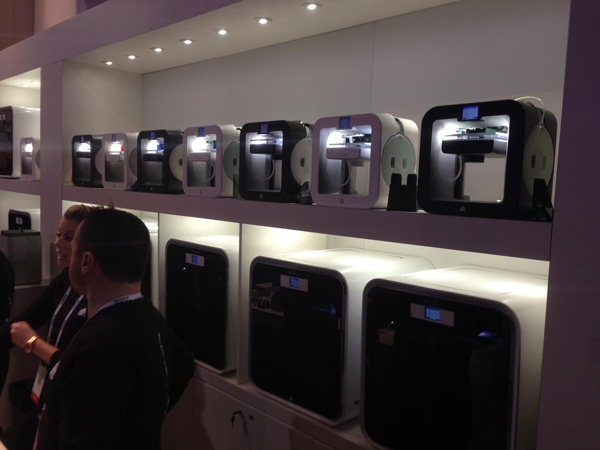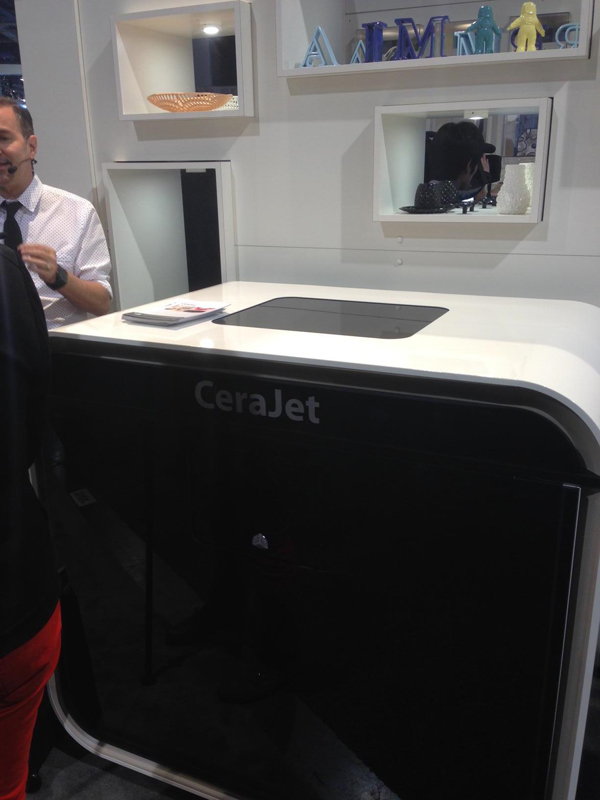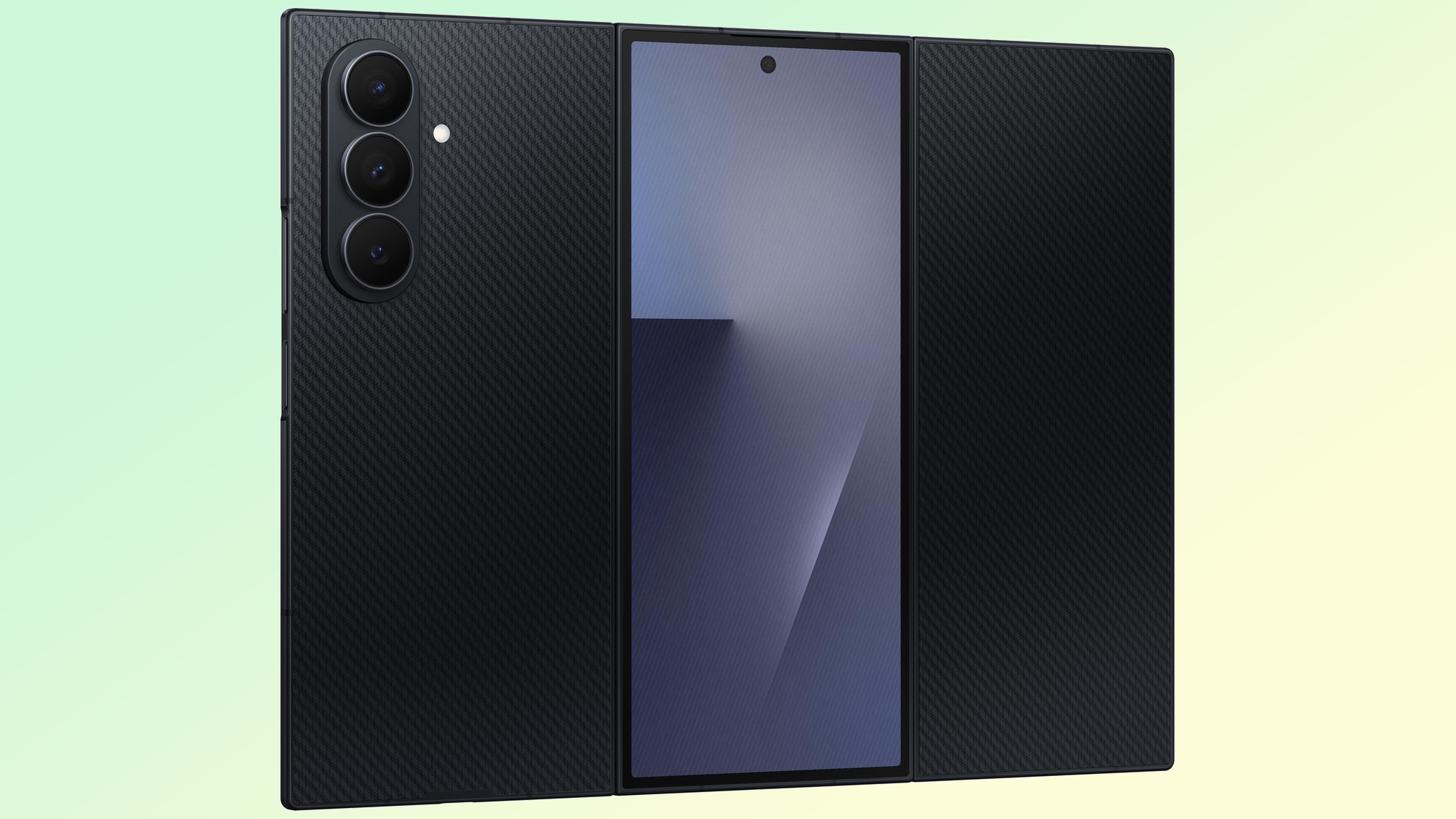CES 2014: MakerBot Vs. 3D Systems (Boom or Bust Breakdown) (Op-Ed)
Now that 3D printing is hitting its stride, mainstream technology companies are thinking about entering the 3D-printing marketplace.


Scott Dunham is a research manager with Photizo Group, a market research and consulting firm. This article was adapted from Dunham's post to the Photizo Group website. He contributed this article toTom's Guide's Expert Voices: Op-Ed & Insights.
This year at the Consumer Electronics Show (CES), the 3D printing portion became a battle royale between two very different market leaders — 3D Systems and MakerBot. While the world ogled over the new printers from the two manufacturers, it became quite clear that the competitive landscape in the consumer 3D-printing market is about to change, and in a big way. While some other 3D exhibitors did their best to make a splash, in the end, things were largely about the battle for future dominance of the desktop 3D printer.
The annual mega-show highlights the latest in technology products aimed at the consumer, a rapidly growing market segment for 3D printers. This year's show featured an astounding 28 dedicated 3D printing exhibitors — illustrating the technology's extremely rapid growth from five years ago when MakerBot was the first 3D company to attend CES. As consumer and personal 3D-printing applications have continued to grow, more and more awareness of the technology has driven a huge influx of competition to the market, many of which are eager to showcase their latest printers, software or other 3D solutions at CES.
In fact, saving the announcement of new products until they can be publicly unveiled at a trade show is becoming standard practice for the 3D printing industry as a whole, and this year's CES was no exception.
After taking in all of the new products and announcements and envisioning what a post-CES consumer 3D printing market looks like, Photizo Group has categorized the two biggest CES 3D printing participants in a "Boom or Bust" analysis based on each firm's latest offerings and strategies.
3D Systems — Boom
With CES 2014 under its belt, 3D Systems, the biggest name in 3D printing, has capped off one of the most impressive six months in industry history. Since the latter half of 2013, 3D Systems has been dominant in terms of developing comprehensive lines of integrated products and solutions. While it has been difficult to keep up with 3D Systems' acquisition strategy, the endgame has become clearer in the wake of CES. New hardware for scanning and printing has come together with new software, solutions, branded content and comprehensive consumer 3D platforms.
Sure, the classic 3D Systems marketing overkill machine was in full swing at CES, but it was backed up with some truly transformative new consumer 3D printers and solutions. Thankfully, the company waited until after most of its printers had been unveiled to announce the addition of Will.i.Am as the company's Chief Creative Officer.
Get instant access to breaking news, the hottest reviews, great deals and helpful tips.
When compared to new products from MakerBot, the current consumer market leader, it's clear that 3D Systems has the better strategy. While MakerBot's new printers advance the capabilities of the firm's previous product lines at premium prices, 3D Systems advanced consumer 3D printing as a whole by bringing new technology to the segment at price points that are as low, or lower than, current standards.
3D Systems is bringing 3D printing into consumer areas that probably never thought of using this technology to innovate. The ChefJet line of food-based printers for professional bakers and the CeraJet line for artists and designers might seem niche or gimmicky at first, but when you start to think about the way these printers can blend timeless skills with twenty-first century technology, it makes for a compelling value statement.
Consider the art of pottery, as much an art form as a practical skill, passed down for hundreds of years, and now revolutionized by the 3D printer. Pottery wheels suddenly can be taken out of the equation, as artists can now fabricate infinitely complex shapes with the printer in a hands-off approach.
And let's not forget the CubeJet — a desktop 3D printer that will be the first to bring jetted polymer technology to the consumer segment, and in full color, no less. By shrinking their ColorJet Printing technology to desktop size, full color prototypes will now be available to a much wider market, which is great news for small businesses, engineers, architects, and a whole host of others. Unlike plastic extrusion printers, the CubeJet will bind a powder-based substance with colored binding agents jetted through a print head to create a 3D model in full color.
With a reported price tag of less than $5,000, the CubeJet appears ready for real market disruption.

In short, 3D Systems owned 3D printing at CES. Sure, everybody expected a new Cube printer. But I don't think anybody expected the company to make such a coordinated play for consumer market dominance all at once. There is no doubt that the current status quo for consumer 3D printing will be upset.
MakerBot — Bust
Similar to 3D Systems, MakerBot (now owned by Stratasys, longtime rival of 3D Systems) teased the world by dropping some hints that the firm would be unveiling new printers at CES, which had legions of enthusiasts excited. But unlike 3D Systems, the direction that MakerBot has taken with its three new personal 3D printers is not one with a compelling value statement; MakerBot has done little to truly move consumer 3D printing forward, but instead pigeonholed themselves with familiar and very expensive hardware.
Most expected MakerBot's next generation of personal 3D printers to integrate some of new parent company Stratasys' expertise with Fused Deposition Modeling (FDM) technology. There is no doubt that the next generation of Replicators offers a number of improvements over previous generations, but there are two key questions to consider: are the improvements worth the increase in cost, and will basic Polylactic acid (PLA) plastic 3D printers still serve the majority of the market's needs in the next three years?
MakerBot has missed the mark on the direction of the Replicator. The firm has put a premium price on the most basic of plastic 3D printing processes; likely in the hopes that MakerBot's brand awareness will continue to carry it forward. The best-case scenario for justifying the hefty bump in pricing is if the next generation of Replicators can finally offer truly hassle-free printing in single color PLA.
That does not sound too compelling. The fifth generation Replicator costs roughly 25 percent more than a Replicator 2. Make no mistake, it does offer welcome ease-of-use upgrades, like a color LCD control screen, an onboard monitoring camera, and a new extruder that can sense when filament is low and pause the print while more is added. But at what point do 3D printer manufacturers need to start thinking about offering a printer that is capable of more meaningful output, not just more convenient output? MakerBot has provided some nice upgrades, but none that will make the Replicator the must-own printer of the next generation.
Then there's the new Replicator Mini and Replicator Z18. The Mini costs around $1,400 (significantly more than the new Cube 3 from 3D Systems), while allowing single PLA extrusion to build a design that is around 64 cubic inches. This model features onboard technology that is similar to that of the Replicator, like the onboard camera and snap-in extruder, and reportedly requires no bed leveling to print. The Mini is a fine printer of the simple single-color-and-material variety, but it is not worth $1,400.
Really, all of MakerBot's newest printers would make much more sense if they were cheaper. The new Z18 is another example. It provides impressive build volume (especially in the Z-axis, that is, height) and is fully enclosed with a heated chamber, which presumably makes this machine capable of delivering high quality prints. But again, the Z18 prints in only PLA, with only one color, and with the same layer heights as the Replicator. One hundred micron layer heights have been the standard acceptable height for several years. And this model costs $6,500. For that price, I would think most of the Z18's target market might be better served just going up to the Mojo or uPrint from Stratasys.
Of course there were other new things from MakerBot at CES that were not printers, in the form of apps to support printing from mobile devices. But in the end, it was not the quantity of new products that was disappointing. It's not that I think the new printers won't sell — I am sure the firm will move enough units to remain a top player in the market in the short term. But MakerBot missed a chance to truly take its products to the next level.
CES 2014 will be remembered as a catalyst for the expanding consumer 3D printing market, and the name that will be associated with that spark will likely be 3D Systems. MakerBot will have to leverage its strong brand presence and growing business-to-business sales network to stay ahead of the competition's more compelling products. 3D Systems will likely continue its approach of bringing new technology to consumer 3D printing while expanding application specific consumer solutions like its 3DMe personalized action figures. My guess is 3D Systems becomes a much more relevant name in the market over the next several years.
Dunham's most recent Op-Ed was "Today's 3D Printer Makers May Not Be Big Players Tomorrow." The views expressed are those of the author, contributed to the Tom's Guide's Expert Voices: Op-Ed & Insights section, and do not necessarily reflect the views of the publisher. This version of the article was originally published on Tom's Guide.

Tom's Guide upgrades your life by helping you decide what products to buy, finding the best deals and showing you how to get the most out of them and solving problems as they arise. Tom's Guide is here to help you accomplish your goals, find great products without the hassle, get the best deals, discover things others don’t want you to know and save time when problems arise. Visit the About Tom's Guide page for more information and to find out how we test products.
